After 45 years, New Orleans Psychedelic Garage Kings The Gaunga Dyns will Reunite at the Ponderosa Stomp
Steve Staples is getting the band together again for this year’s Ponderosa Stomp.
That band just happens to be one of New Orleans’ most popular mid-‘60s rock groups, one that hasn’t shared a stage in this configuration for 45 years. The Gaunga Dyns cut two 1967 45s for Joe Banashak’s Busy-B label and gigged non-stop on the Crescent City circuit for more than two years prior to their mid-‘68 breakup. With four original members back on board, this reunion is as eagerly anticipated by the band itself as it is by their longtime fans.
Early Gaunga Dyns: Kings of the West Bank Scene
The classic Gaunga Dyns lineup coalesced in 1965 or early ’66. “There were two bands that were local to the West Bank that got really popular,” says Steve. “One was called the Twilights. That’s the one that I was in with Beau and Neale Lundgren and Ricky, the drummer. And then there was another band called the Gaunga Dyns, which had Bobby the bass player and Brian Collins. They had another lead singer and Bobby’s brother (David Carter) and a guy named David Allston. They were older brothers to Bobby and another friend of ours, Mike Allston.
“They formed the Gaunga Dyns a little bit after the Twilights were formed. And then when the brothers graduated from high school, they were older, so they didn’t want to do it anymore. It was just a hobby for them. And in the Twilights, we weren’t real happy with our bass player. And we were friends with the guys in the Gaunga Dyns. So we just started talking. They didn’t know what they were going to do. So we said, ‘Let’s just form the Gaunga Dyns. Let’s just go form one band with the Gaunga Dyns with everybody who we like!’”
The Gaunga Dyns all attended various local high schools when they came together. “The lion’s share of the band went to Behrman High School, which is on the West Bank. Ricky and I went to Benjamin Franklin. I went there for a year and came back to Behrman, and Ricky stayed at Franklin and graduated from Benjamin Franklin,” says Staples. “Neale Lundgren went to Redemptorist High School, a Catholic high school. Beau went to Holy Cross.” The band’s eye-catching moniker was in place before Steve came into the band courtesy of Brian’s grandmother, the band itself dreaming up the unique spelling.
Their extreme youth didn’t impede the band’s gigging itinerary in the slightest. “Back in the ‘60s, it was not uncommon for young musicians to be playing in bars. So we played all over. I was 14 years old, and I was playing in barrooms. And so was everybody else,” says Steve. “When the Twilights broke up and the original Gaunga Dyns broke up and we formed the Gaunga Dyns, the one that made the records, then we started practicing a lot. And we got a manager named Jeb Banashak, who was Joe Banashak’s son. Jeb’s sister was married to Tom Collins.” Tom was half of a pair of twins that were deejays on WNOE radio’s underground FM station, which gave the band another valuable contact.
“We had the Joe Banashak connection, which got us a record contract and a record deal and a recording at Cosimo’s studio. And we had his son Jeb who knew everybody in town through his father, all the club owners. Because his last name was Banashak, everybody would listen to what he had to say. So we worked literally every weekend, every Friday and Saturday night,” says Staples. “Sometimes more than that. Sometimes a job on Saturday during the day, and a job on Saturday at night. We worked all the time.
The Teen Night Club Scene in New Orleans in the 1960s
“Back then in New Orleans, there were two teenage nightclubs, and one was called the Hullabaloo Club. It was big. It was on Airline Highway. And you could go there, if you were a teenager, and they had bands playing on the weekends, and it was a dance. They didn’t serve alcohol. Their advertisement said—I actually have a picture of the poster—that it was a club for people from 14 to 28, or something weird like that. But that’s what it said on the little thing. And it was packed every weekend. And we played there a lot. And we also played VFW halls,” he says. “We were playing all over in Mississippi and Alabama and the Gulf Coast. We didn’t ever go to Texas, but we were in Louisiana, Mississippi and Alabama, mostly. Probably if we’d have stayed together we would have gone national, but we didn’t.
“All of our gigs were just packed. We were really popular. Every battle of the bands that we were ever in—we were in I don’t know how many—we won. I remember a lot of different shows, but there was not one that stood out because they were all really good. We were extremely well-rehearsed, and we were really, really good,” he says. “We rehearsed four days a week every day for two hours. And then we played on Friday and Saturday. We rehearsed Monday, Tuesday, Wednesday and Thursday. And we didn’t never not do that. We’d never take a week off. We just played. We rehearsed all the time.”
As they moved up the local ladder, the Gaunga Dyns crossed paths with Crescent City R&B royalty in the clubs. “A couple of times, we were Ernie K-Doe’s backup band. He came and did a whole set with us. That was fun. That was at the Hullabaloo Club,” says Staples. “We played with Irma Thomas and Benny Spellman at Your Father’s Mustache.”
The Joe Banashak Legacy
Joe Banashak was a very successful player in New Orleans’ record business. His A-1 Record Distributors handled most of the Crescent City’s top labels, and he formed Minit Records with popular WYLD-AM deejay Larry McKinley in 1959. K-Doe, Thomas, and Spellman posted hits on Minit, as did Jessie Hill and General Johnson’s vocal group, the Showmen. Allen Toussaint was the creative genius behind Minit’s ascendancy, handling the lion’s share of the production, arranging, and songwriting.
Banashak, McKinley, and Irving Smith diversified in 1961, launching the Instant logo, where Chris Kenner had a smash with “I Like It Like That” and waxed the original “Land Of 1000 Dances.” Toussaint was central to the creative muse there too. Both imprints thrived for a time before Los Angeles-based Imperial Records acquired Minit during the mid-‘60s. Instant carried on into the early ‘70s as an indie.
The Busy-B Label
Banashak introduced the Busy-B logo in 1967. It wouldn’t survive for long, issuing a mere handful of releases. The Gaunga Dyns dominated Busy-B’s release slate with their two singles, cut at separate dates that year at legendary engineer Cosimo Matassa’s last studio. “Jeb and the engineer and Joe produced the first record,” says Staples. Beau sang lead on all four of their Busy-B sides, with Steve adding vocal harmonies.
Rebecca Rodifer
The group’s first Busy-B offering, “Rebecca Rodifer,” was penned by Staples and lead guitarist King, its subject’s name entirely fictional. The song’s ominous storyline dealt with a subject not often encountered on the ’67 pop hit parade. “Back then, abortions were illegal. Completely illegal,” says Steve. “At the high school we went to, there were supposedly true stories about girls and people who had used coat hangers to perform abortions. And so I had heard that story, and I just extrapolated from that.
“I knew a girl that got pregnant in high school and had an abortion. She didn’t die from it, but it was illegal. So just those two things—I thought, ‘God, somebody could die from this!’ And I’m sure people did. But it was such a weird subject that I didn’t tell anybody what it was about. So we recorded the record and released it. And then my mother heard it for the first time. She flipped! She went ballistic on me, but it was too late.”
Stick With Her
“Stick With Her,” the flip side, was a cover of a release on the Cardu label by a Houston rock band, the Glass Kans. “Bobby, our bass player, knew the guy Scott who was one of the co-writers of that song,” says Steve. “We were looking for a song, so we listened to the record. And if you listen to it, we just covered it. That’s all we did. We just covered it exactly the way they played it, but we just played it. But our version sounds a lot different than theirs. I like their version a lot, but I like our version better.”
Clouds Don’t Shine
After a single by Inell Young (“His Love For Me” b/w “I’ve Never Considered”), Busy-B unleashed the Gaunga Dyns’ encore. “The second record, he let us produce it ourselves,” says Staples,who wrote from painful personal experience on “Clouds Don’t Shine.” “My girlfriend at the time, her name was Suzette,” he says. “She was going to break up with me, and she did break up with me.” King’s majestic guitar was key to the track’s power. “He was playing through a Vox Viscount amp and a Maestro Fuzztone, so he had the Vox on distortion and the Maestro on distortion,” says Steve. “That’s why you had all this overbleeding through cool distortion. It’s like double distortion, is what it actually is. And he was playing a Gibson ES-330. We both had the exact same thing. Well, not the exact same guitar, but the same model. Mine was a little different than his, but he got one because he liked the one that I got.”
No One Cares
Staples and King collaborated on the other side of their second outing, the pulverizing “No One Cares.” “We wrote that song in the studio a half hour before we recorded it, because we were so excited about recording the second song that when we went to the studio, we forgot that we needed another song,” says Steve. “When we got done, Jeb and Joe said, ‘Okay, now let’s record side B.’ And we went, ‘We don’t have side B. But give us 15 minutes!’
“So Mike and I went and wrote that song, and then came back in and we rehearsed it once and recorded it.” And it’s killer because of what Ricky did. He just made that drum solo up. The song is a drum solo. And he made the whole thing up right on the spot. And he went on to play drums with some band—I can’t remember the name of the band, but they were touring in Europe, opening for Steppenwolf in the early ‘70s. And Steppenwolf’s drummer got sick, and they hired Ricky to play drums for both acts on the tour. He played drums for Steppenwolf and for the band that he was in!”
There’s not much hope for additional vintage Gaunga Dyns recordings turning up anytime soon. “There are some recordings, but we don’t know where they are,” says Staples. “They weren’t done in the studio. They were done on home tape recorders. But we don’t know who’s got those.” The Busy-B master tapes are history. “They shut down, but they still owned a lot of publishing. They still had a lot of records. And they still had a lot of paraphernalia. And they had all their tapes. And they were in storage, and they flooded in Katrina and they lost everything. Which was really a shame, because they had a lot of cool stuff,” says Steve. “The tapes are gone. The 45s are gone.” But future reissue compilers need not despair. “Between the band members,” says Staples, “we’ve got a few copies of each 45.”
The end came for the Gaunga Dyns in mid-1968, though Steve was already an ex-member. “They kicked me out,” he says. “Bobby, our bass player, his father was in the oil business, and he got transferred to Connecticut. And he worked in New York. So Bobby had to leave in late ’67. So he was gone.
“We didn’t have a bass player. So they drafted me, and I didn’t want to play bass. But they talked me into it, but I was not comfortable doing it. So we were working on some songs, and we were working on ‘Lady Madonna.’ I remember it very specifically. And we never finished rehearsing it well enough, and I wasn’t comfortable. I didn’t know that bass part at all. I mean, I just was learning it at rehearsal. And then we had a gig the next night, and Ricky decided that he wanted to play that song. I said, ‘I don’t know the bass part!’ He said, ‘We’re going to play it anyway.’ So we started playing it. And I didn’t know it. It was embarrassing.
“I just said, ‘Look, I’m not going to do this. I can’t play bass in this band. I want to play guitar and sing, like I’ve always been doing. We should get another bass player.’ And the next day they came and kicked me out. And then they got Beau to play bass, because they didn’t want to get anybody else in the band. So they had Mike playing guitar and Beau played bass, and Brian played organ and Ricky played drums. And they played in that configuration, I think probably past a little April of ’68. They probably played one more gig in May of ’68 on the Gulf Coast at a convention, because I was there and I saw them.”
After the Dyns
Though most of the Gaunga Dyns went on to day jobs, Staples stuck with music. “I got in a couple of other bands around here, but nothing ever really jelled,” he says. “They were already formed, and I didn’t really know ‘em. The Gaunga Dyns, we were buddies. We hung out together. We did everything together. We didn’t have much time to really go out and do stuff because we were playing all the time.”
For the last 22 years, Staples has operated International Vintage Guitars, located at 229 Pelican Avenue on the West Bank in Algiers Point. Stop in these days and there’s a good possibility that you’ll meet not only Steve, but some of the other members of the Gaunga Dyns as well (Bremer’s also in the Avon Suspects). They’re hanging out together again, tightening their attack and waiting for their big reunion set at the Stomp.
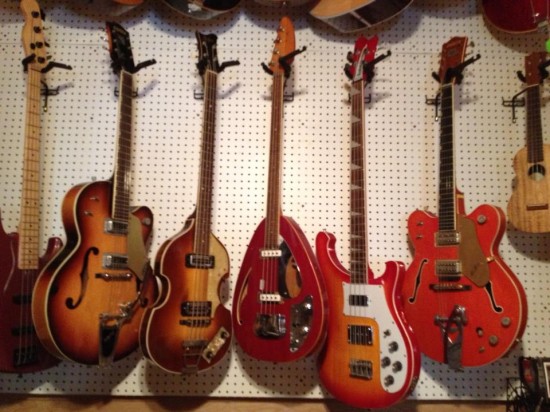
Reuniting the Gaunga Dyns
Reuniting the Gaunga Dyns has been on Stomp boss Dr. Ike’s radar for a long time. “Ira’s been asking me to do it for about seven or eight years,” says Steve. “I couldn’t find Beau, the lead singer. I didn’t know where he was. Nobody knew where he was. None of us could find him. So we looked and looked and looked. And then about two or three years ago I was playing in the band that I play in at the Old Point Bar in Algiers, and Beau just walked in while I was playing. So he recognized me, and it turned out he lived about two miles from where I live.
In addition to guitarist Staples, lead singer Beau Bremer, bassist Bobby Carter, and organist Brian Collins will shake the Stomp walls. Only former lead guitarist Mike King and drummer Ricky Hall will be missing from the classic Busy-B lineup, the latter due to recent back surgery. “He got a set of drums and he practiced, and he said that he just couldn’t do it,” says Steve. Robert Hale was recruited from Staples’ current band, the Avon Suspects, to play drums, and Steve’s wife Ashley will be playing rhythm guitar and doing background vocals. Staples will handle lead guitar duties himself.
“Anyway, we hit it off and we got back together. And then I started talking to Ira about Beau showing up. And I had been in touch with the organ player, and the bass player and I played in another band together 25 years ago, 30 years ago. So when Ira called me again, after I’d been talking to him about the fact that I’d run into the singer, he said, ‘Well, do you think that you could put it together this time?’ I said, ‘I’ll sure give it a try!’”
“We’re real excited about it,” says Steve. “It’s going to be fun. Everybody in the world that we know is coming!”
–Bill Dahl



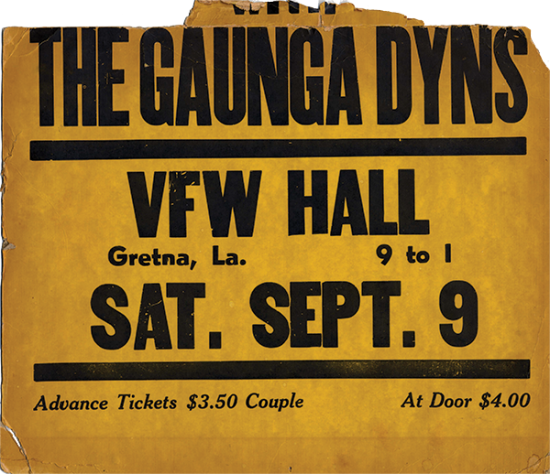
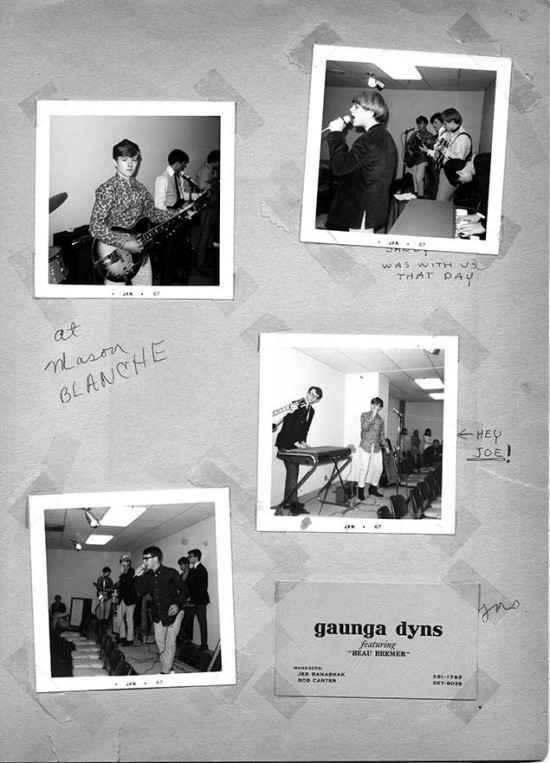







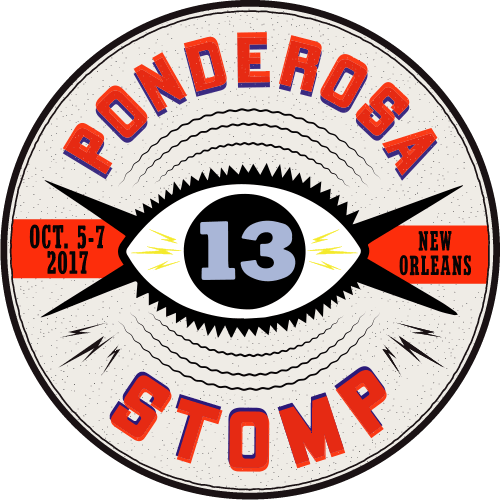
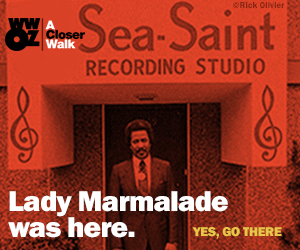
Excellent sound, excellent article! FB page: Lower Third Enterprise
Excellent sound, excellent article! FB page- Lower Third Enterprise
Нello, I enkoy reading all of your article. I like to rite a
little соmment to suhpport you.
Just wanted to let you know the other guy who sang with ya’ll was Johnny Baker brother of Willie Baker (Behrman class of 1964 who was quarterback of the team and broke his neck his 1st semester in college and has been paralyzed from the neck down since then). Johnny was my best friend growing up & he died a few years ago in a traffic accident. Willie lives with his mom in Algiers and he is proud of Johnny’s being a part of your band and talks about it often.